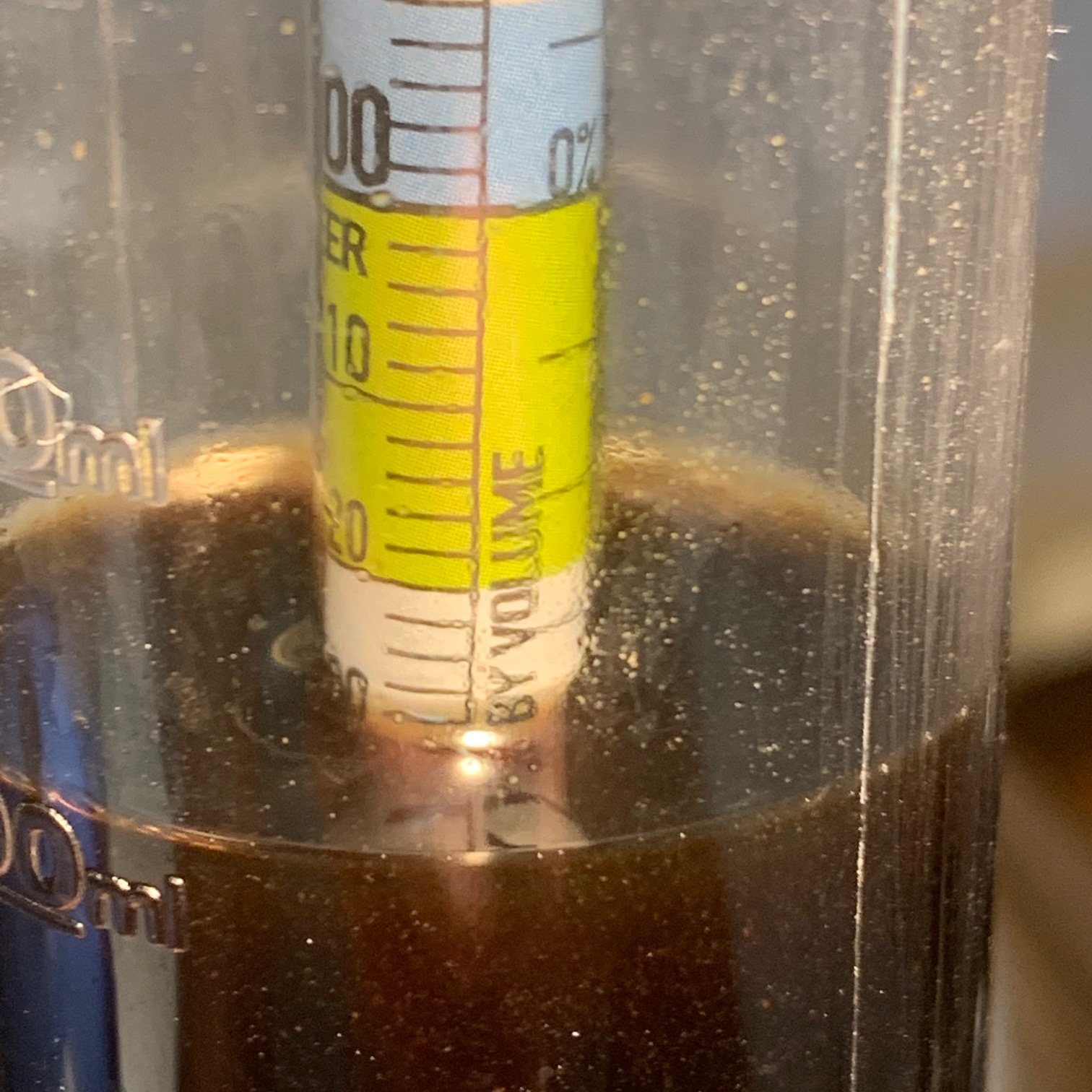I'm happy with the outcome. It is a beer you don't really want to drink a lot of at one time. The flavor is very distinctive. I have not had Abraxas in a few years so I am not sure how to compare the two. This beer is absolutely opaque, dark dark brown. FG is measured measured at 1.032, I just degassed a sample. It is quite viscous, like thin syrup. I'm not sure it needed the maltodextrin but I have never used it before, so I'm not sure if it accounts for the viscosity or if it's just everything else combining into a final outcome. It is sweet but also bitter and mildly roasty. The brown foam disappears pretty quickly. I am happy with the grain bill. I like the non grain adjunct balance pretty well but that will be a bit difficult to duplicate. The alcohol flavor is very present adding to the sweet perception. It is not hot or fusel at all. The cinnamon, chocolate, vanilla and pepper combine into a very distinctive flavor. No one flavor seems to outshine the others. Overall it is a great cool weather sipping beer. Not the best for the current heat we have been experiencing in the Sierra Foothills. That calls for some lower FG, yellow beer.
My pepper tincture was a few Ancho chilies soaked in vodka since last fall when I made a cross between Xocoveza and KBS. The Anchos were shredded and packed loosely into an 8 oz jar, then enough vodka was added to cover. I added about 1.5 oz of the tincture per gallon (poured all I had left in). The Ancho gives a very present pepper flavor but almost no heat. I did not use weight to measure the original pepper addition, which would yield more repeatable results but peppers are an imprecise variable on their own. Vanilla tincture was 5 beans also in an 8 oz jar filled with vodka, soaked over a year. I used about 1 fluid oz of tincture per gallon. Prior to bottling I felt like it could use some more cinnamon so I simmered one 4 inch Ceylon cinnamon stick, crumbled, in 400 ml of water for 20 minutes to extract flavor. I added 10 OZ of lactose, 3 oz maltodextrine and 56 grams of cane sugar to this. That went in the priming bucket with the beer making up a total of 12 liters. The 400 ml of water lowered the FG, the lactose and malto raised it and in the end it went from 1.028 measured before the additions to 1.032 after 2 months in the bottle.

Next big stout I want to make when this begins to run low will be
@day_trippr 's Triple Chocolate Imperial Honey Stout.






















































![Craft A Brew - Safale S-04 Dry Yeast - Fermentis - English Ale Dry Yeast - For English and American Ales and Hard Apple Ciders - Ingredients for Home Brewing - Beer Making Supplies - [1 Pack]](https://m.media-amazon.com/images/I/41fVGNh6JfL._SL500_.jpg)






